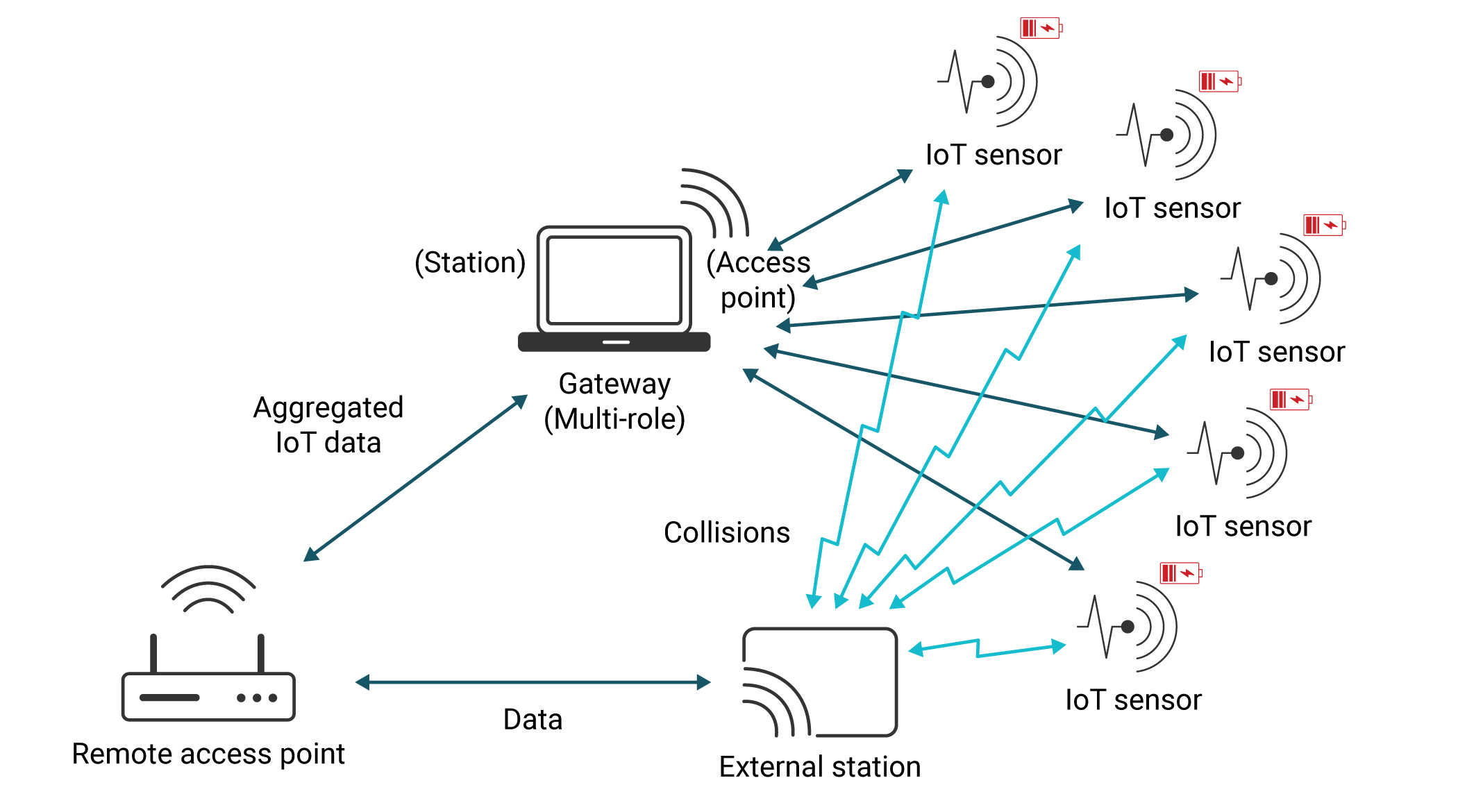SWRA733 March 2022 WL1807MOD , WL1837MOD
2.1 MRSC Single Radio Network Topology
The following example will demonstrate the Multi-Role Single-Channel use case and how system efficiency is significantly impacted when roles are operating on same channel (and band): As can be seen in the Figure 2-1 below the traffic between the IoT STAs connected to the Multi-Role device Access Point overlaps and collides with the traffic running from the Remote Station to the Remote Access Point running on the same channel. Thus, overall system throughput is degraded. In addition, the system’s overall power consumption is higher as the amount of re-transmissions required from all the devices is higher.
 Figure 2-1 Multi-Role Single-Channel
Network Topology
Figure 2-1 Multi-Role Single-Channel
Network Topology